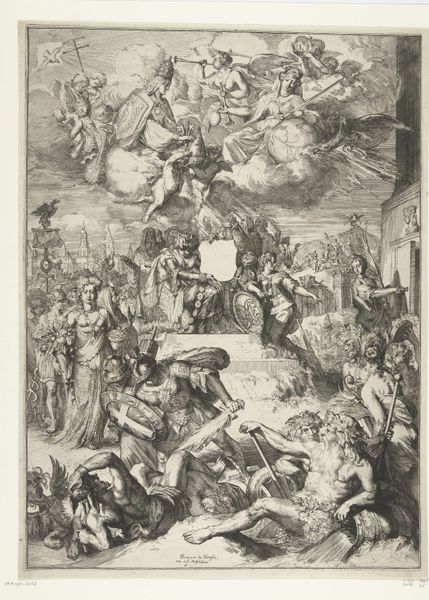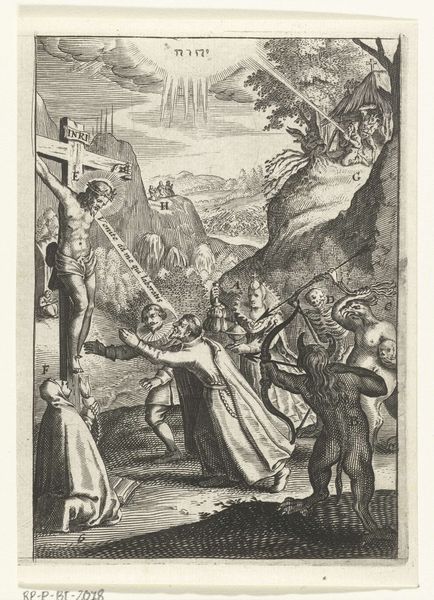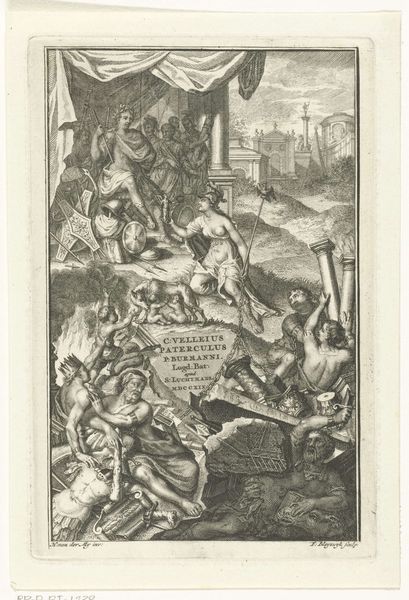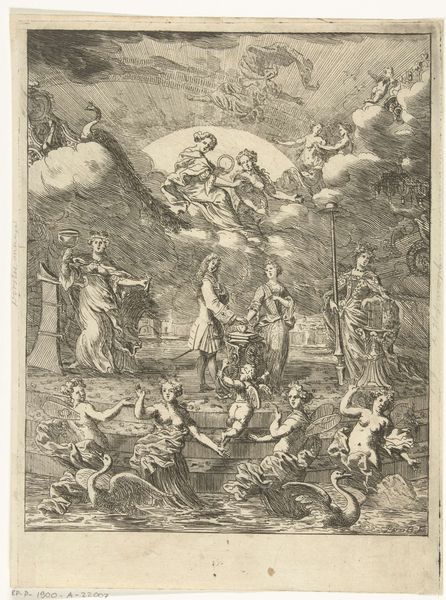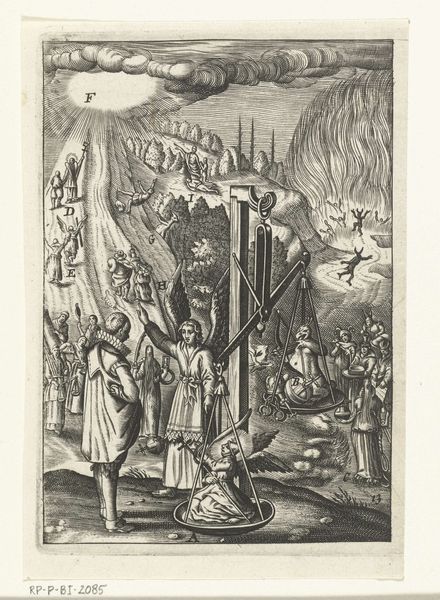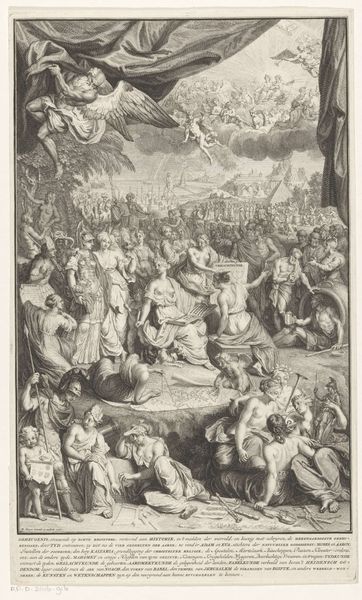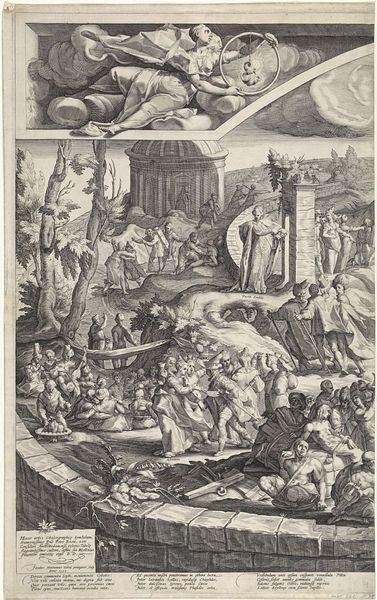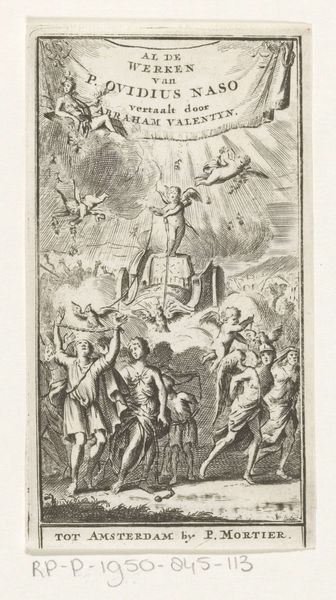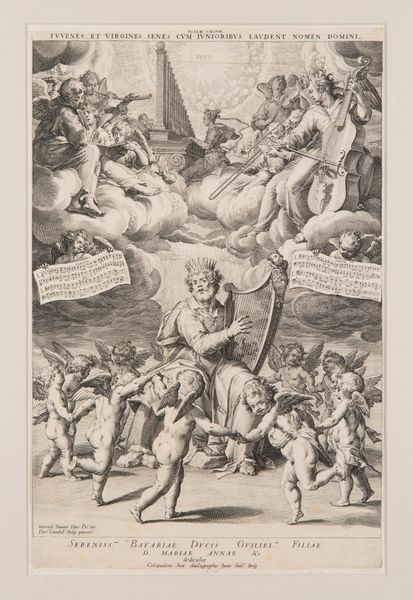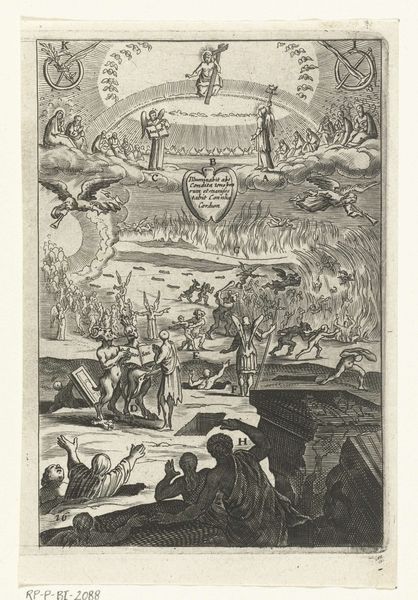
print, engraving
#
narrative-art
# print
#
pen illustration
#
engraving
Dimensions: height 141 mm, width 89 mm
Copyright: Rijks Museum: Open Domain
Curator: I'm immediately struck by the frenetic energy of this print. It feels almost chaotic, a swirling mass of figures in a dramatic scene. It's a narrative unfolding before our eyes. Editor: Precisely! The engraving, titled "Aanval op processie te Peru" or "Attack on Procession in Peru," created around 1700 by Bernard Picart, aims to depict the violent clash during the Spanish conquest of Peru. Look at the way he layers the figures to represent power dynamics and indigenous labor. Curator: The composition is interesting. We've got the procession in the foreground, very active, very confrontational, and then this almost surreal tableau unfolding in the background. It creates this tiered landscape of action and resistance, no? Editor: Yes, exactly! The print presents the indigenous population, some in scenes of labour such as in what seem like mining efforts on the left side of the image, juxtaposed with Spanish colonizers carrying religious iconography under threat from attacking Indigenous figures. Picart never visited the Americas, and this baroque illustration should be contextualized within European understandings and assumptions about colonization. Curator: The limited colour palette inherent to engravings lends this such drama. There’s something incredibly compelling about stark lines and sharp contrasts, especially given the violent theme. Editor: The print's existence signals the growth of a print market where consumers had great curiosity about New World colonization. The lines demarcating bodies are very defined and carefully delineate their roles in colonial resistance. This kind of material dissemination and consumption speaks to a certain political agenda on the European front. Curator: What's especially unnerving is how easily this conflict could be repackaged, reprinted, consumed. It transforms violence into a commodity, or at least into a readily available image for contemplation and discussion. Editor: Absolutely. I mean, consider the implications of depicting labour and resistance within a single frame in this engraving format: Who is this image meant to represent, and whose purposes does its consumption serve? Curator: I suppose we're left with that enduring question of art’s role in perpetuating or challenging dominant narratives. And here, the labour, the drama, the story itself is undeniably complex. Editor: Precisely. The very act of dissecting such historical records encourages critical reflection, something every artwork should incite.
Comments
No comments
Be the first to comment and join the conversation on the ultimate creative platform.
